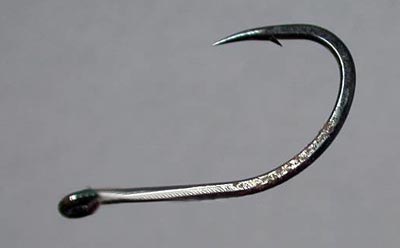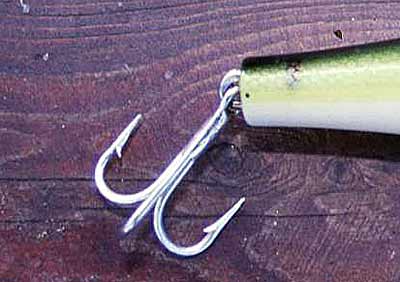What on earth is there to say about barbless hooks – doesn’t everyone use them nowadays? Well, no, they don’t. And I’d like to give some of my reasons why not. Firstly, let’s deal with the conservationist faction, because there’s an irrelevance about this caucus that irritates me. You’ll hear and read of various bodies, nothing whatever to do with angling (except that they want us off the waters perhaps?) singing the praises of barbless hooks. They know nothing at all about hooks – barbless or otherwise. The only views of any value to the angler are those which emanate from the anglers themselves, from experienced anglers, or from angling officials who fish. Angling officials who do not fish get all their ‘knowledge’ secondhand, on the notoriously unreliable grapevine, and their opinions are as worthless as those of non-anglers on the subject. I emphasise the word experienced in the last paragraph because one does read so often letters in the angling press, from anglers who have just taken up the sport, recommending the use of barbless hooks. Why? What on earth do they know about the matter? Are they not trying to appease those who criticise angling, just like those officials in angling who take the same line? This is no way to advance angling or its cause. Only two things matter: whether or not barbless hooks are better for fish? And whether or not they are better for angling? Clearly you can have no valuable viewpoint on these two questions if you have only fished for ‘five minutes’ or have never fished at all. So what do I know about it? I have used barbless and semi-barbless hooks since the late 1950s, in various experiments and tests, for a variety of species and in many waters. I am not a modern convert to barbless hooks, but write from experience. I first started down the barbless track because I thought the barbs on pike hooks were dreadful – enormously rank, often wrongly positioned, and the chance of penetration on the strike must have been low.
This was especially true of the galvanised hooks that so often adorned lures such as plugs and spoons. Now, I don’t know if you have ever tried to file down the barb on a galvanised hook, but I can tell you it is not easy. I had to take mine to work and have them done on a grinding wheel! If you try to press them down they snap off, leaving a small bumb – the barb base. Bronzed hooks can usually be pressed down, or filed down, and they also snap occasionally. I tried all modes: full barbs, half pressed, pressed so that a mere whisker point remained, fully pressed, snapped off, and fully removed (the last being just like a modern barbless hook). I proved three things fairly quickly: So one thing that manufacturers could attend to, as a universal factor, was to make hooks with very small barbs. These barbs should not be too close to the hook bend, or purchase is quite adversely affected. And for lure fishing with plugs and spoons, it seemed to me quite clear that totally barbless hooks were a disaster. Even holding a fish hard didn’t always work, especially if they leapt and created slack line (similarly when swimming towards the angler). Again, small or whisker barbs were best. Galvanised hooks with the barb snapped off, leaving an angular protuberance, were not too bad – in fact it is amazing how little a ‘barb’ is needed to hold a fish well. I object to people telling me I should use barbless I would extend my argument about lure fishing and barbs: in my experience barbless hooks lose fish frequently. There is no doubt at all that barbless hooks allow you to unhook pike easier, but by the same token the pike can unhook itself more easily. Yes, it is true that barbless hooks can be removed from micromesh netting easier, but this is irrelevant to the two questions I’ve already posed. However, the ease of unhooking from net or fish are the two reasons why many modern pikers use semi-barbed hooks; added to the fact that some anglers allow the pike to swallow the bait too deeply, simply because they know they can get the hooks out. I believe that this last factor is one of the causes of the decline of ‘discovered’ pike waters. Microbarbs or whisker barbs are all that is necessary to hook and hold fish, and they are almost as easy to remove as barbless hooks. (Incidentally, when many pikers land their fish they find that it is hooked and held by one barbed point, not by the barbless ones!). I have met anglers who have lost pike after pike, yet didn’t have the gumption to try small-barb hooks instead of barbless. One chap had had six runs in a season, all from big fish temporarily on the end of his line, and each fish came off. I saw him hook and lose the last of these, which is how we came to be discussing it. He struck the fish well, got a good bend in the rod, but halfway through the battle the fish ‘inexplicably’ got off! Many anglers do not realise the diving and gyrations that go on underwa When you purchase through links on our site, we may earn an affiliate commission, which supports our community.
|
Welcome!Log into your account












